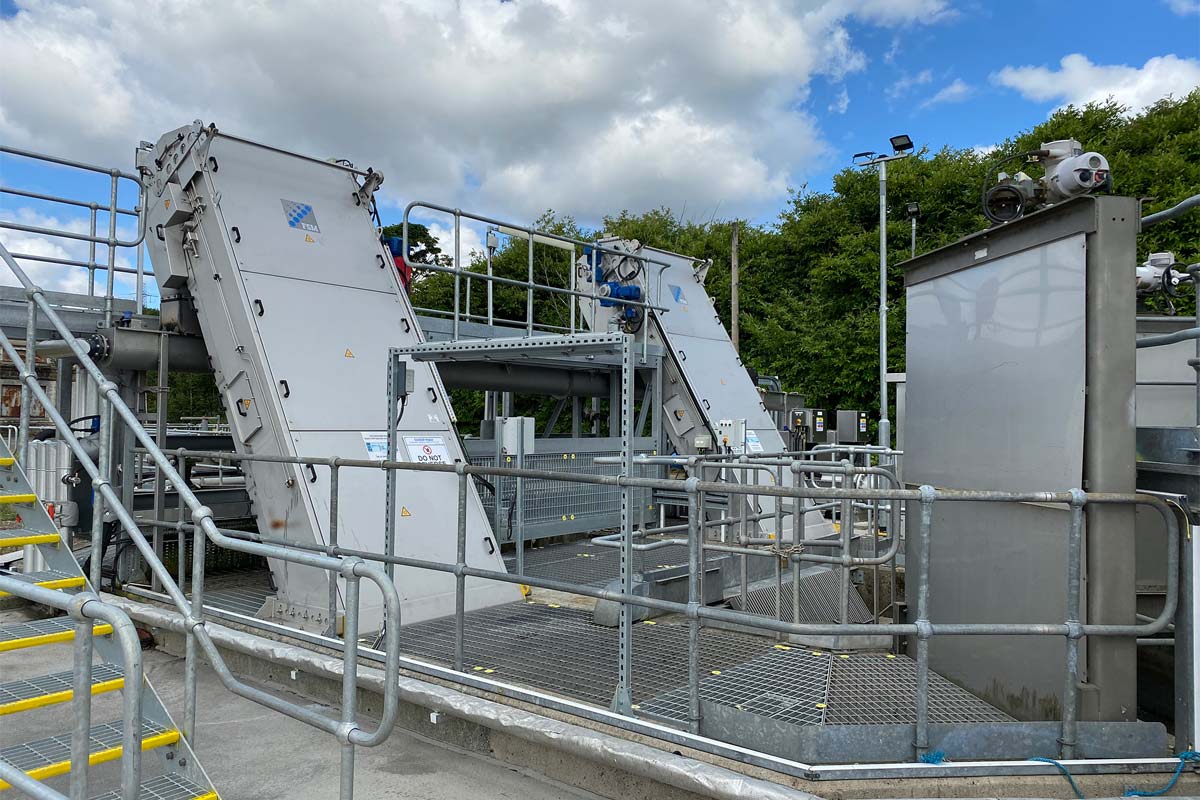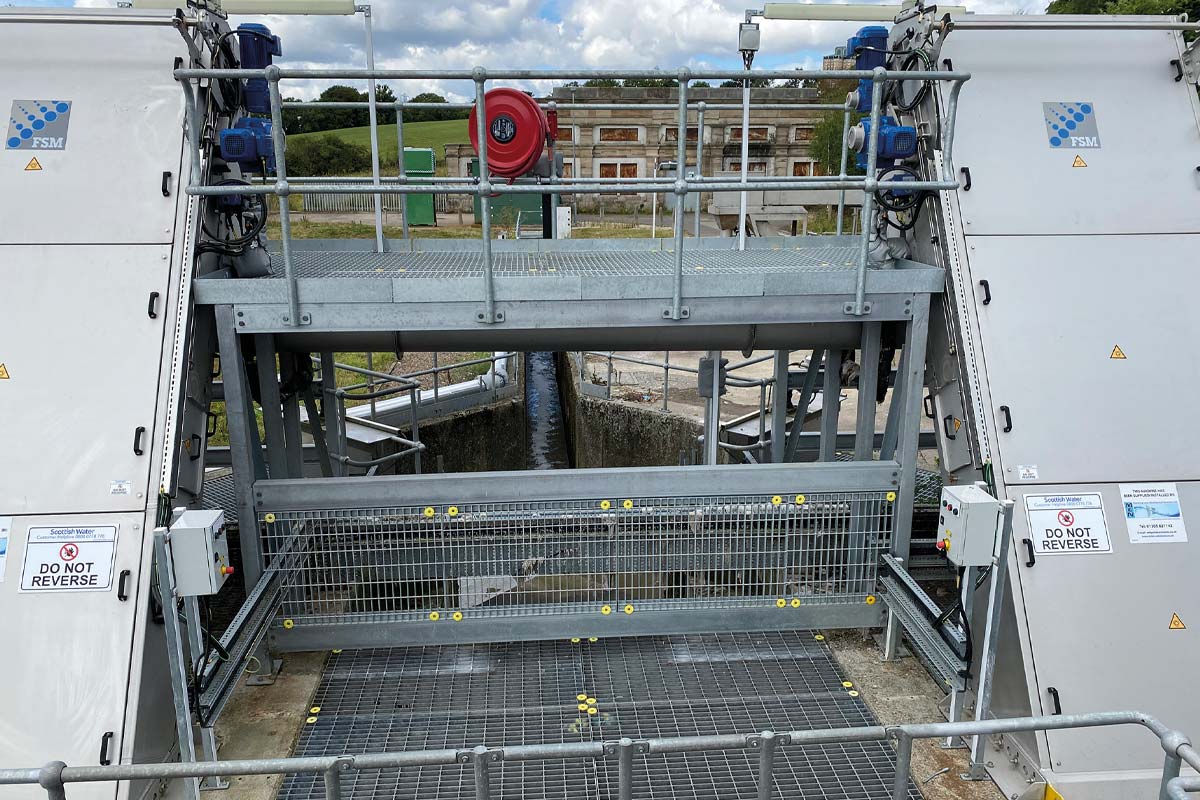Water technology firm Hydro International writes about recent success with cutting the Opex costs and carbon footprint at a wastewater treatment plant run by Scottish Water.

Carbarns Wastewater Treatment Works (WwTW) is located in Wishaw, to the South-East of Glasgow, within the Clyde River valley. The site is part of the ‘Clyde 7’ group of Scottish Water treatment facilities, serving a population of over 54,000 from Wishaw and Overtown areas. Along with the inlet works, the site has primary and secondary treatment and phosphorous removal. Treated water from the plant is discharged into the River Clyde.
The 6 mm fine inlet screens at Carbarns WwTW were failing regularly as the screen panels were plastic and very prone to breaking, particularly following storm events when flows were higher than usual and contained more debris. Scottish Water was having to stock spare panels on-site and replace them as often as every week, depending on the weather.
When the inlet screens failed, a considerable amount of rag was feeding through to the primary settlement tanks, causing chokes in the sludge pumps. When the screens tripped out in storm conditions the bypass screen would blind up in minutes, not allowing enough time for standby operators to reach the site and causing flooding at a nearby property. The result was a significant amount of time and resources spent on clearing these chokes and blockages and cleaning up by the operations team.
The biggest impacts were financial and carbon related. Carbarns WwTW would normally send sewage sludge directly to the Daldowie fuel plant, near Glasgow, which processes it into a renewable, low-carbon form of biomass fuel pellet. However, because of the high content of rag in the sludge caused by the inlet screen failures, it could not be sent directly to Daldowie Fuel Plant but had to be taken for further processing to Shieldhall WwTW, some 20 miles away on the other side of Glasgow. This involved up to 23 tankers a week transporting the sludge to Shieldhall for additional treatment before it could be pumped over to Daldowie. The associated costs were considerable.
The solution
Scottish Water worked with Hydro International’s UK Wastewater Services team, M&N, to evaluate the site and propose a solution. The team installed a Kuhn KHU-S Multirake Boomerang 70mm coarse screen to provide protection to the FSM escalator screens by removing the larger coarse screenings. Two FSM FRS 111 escalator screens were then fitted at 60°, providing an impressive maximum flow capacity of 770 l/s each, to provide fine screening of the sewage inflow.
The screens are running in a duty standby mode, conducted automatically by the control panels which were supplied for all equipment. Each of the screens has the capacity to take the full flow to treatment, should one need to be taken off-line for service, maintenance, or repair. The strong screen panels are stainless steel so able to withstand storm flows, combatting the initial issue of weak plastic-based material screens. A launder system was installed to transport rag to two Kuhn KWP-HD 400/1200 wash presses to process, wash and compact the rags.
Once the new inlet works package was installed, the Primary settlement tanks and Aeration tanks were cleaned to ensure that no rag was left in the system. This was an additional cost of £106K before Daldowrie Fuel Plant could accept the sludge again.
Simon Light, National Sales Manager for Hydro International, said, “We needed to find a high-quality effective solution for the Carbarns WwTW to prevent any further overflows, and to help reduce the high cost and carbon impact the high content of rag in the sludge was creating. Our specialist inlet works team designed and installed a robust, reliable inlet works system that combines screening, washing, transport, compaction and dewatering in a single cost-effective and sustainable standalone solution.”
Stephen Heatley, WW Operations Team Leader at Scottish Water, said: “Since the project’s completion in September 2020, there has been a significant reduction in costs and carbon use now that the sludge can be transported directly to Daldowie Fuel Plant for processing. The amount of reactive time that operation staff previously needed to spend dealing with chokes and cleaning up has dramatically reduced, with a knock-on effect that morale has improved, providing more time to spend on proactive tasks.”
Moving forward, the UK Wastewater Services team will service the screens every year and provide maintenance to ensure the equipment is operating at optimum performance.








